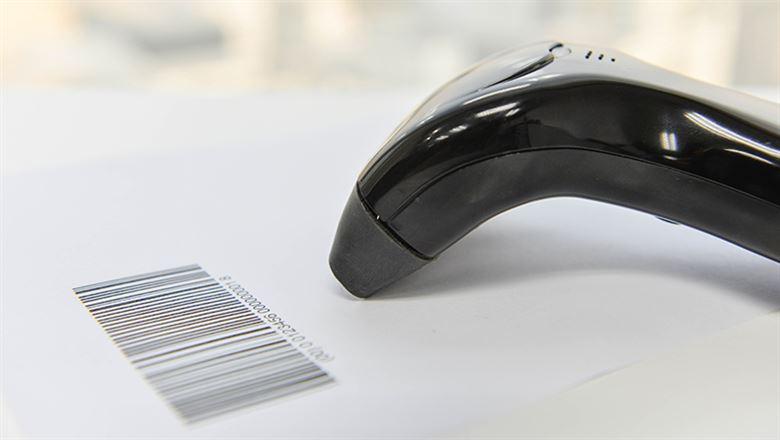Davin Hattaway, CAE
Davin Hattaway, CAE, is an account manager for association consulting at M Powered Strategies in Washington, DC.

Many associations have considered incorporating barcodes into their event operations, but cost and equipment can get in the way. Here are practical tips to help a small-staff association get started.
Barcode scanners make it easier to check-in attendees, process continuing education credits, track attendance, and measure a program’s success.
Many commercial barcode vendors have developed excellent solutions to address these needs at tradeshows and large events. But their complexity and expense make them impractical for the wide variety of luncheons, brown bags, chapter programs, and other events that small-staff associations produce for their members.
Regardless of their size, organizations that want to offer badge scanning can implement a low-cost solution by using generic hardware and a few quick tips.
Barcode scanning requires two elements: a handheld barcode reader and the downloadable barcode itself. You will find off-the-shelf readers that are reliable and affordable—many high-quality devices cost less than $50.
As you make your selection, your only criterion should be cost. Nearly all devices on the market can meet the needs of a small-staff association; more expensive models offer features that probably are not necessary. Buying a fancy model won’t improve how well you track members at small events.
Regardless of their size, organizations that want to offer badge scanning can implement a low-cost solution by using generic hardware and a few quick tips.
Keep in mind that the device should be portable, so that volunteers and staff can bring them to conference centers and conventions. And if one gets lost, you won’t have to worry about an expensive replacement.
Barcodes come in a variety of flavors, with complex names like Code 128, CODABAR, and GS1. While the barcodes might look identical, they are all very different on the technical side. Many of them include layers of error-checking by the software embedded in the barcode reader, which ensures that the barcode is read correctly even if the name tag is physically damaged.
Modern barcode readers can read all standard formats, and they will automatically detect which one is present.
For a small association, the ideal choice is Code 39 for several reasons:
What’s error-checking? Error-checking is an important part of barcode design and is the main reason why there are so many formats on the market. A warehouse, for example, does not want packages going to the wrong person, so an extremely high accuracy rate is expected.
Code 39 has no error-checking. That sounds bad, until you consider the context of a small-staff association. Code 39 has reported error rates of about one mistake for every 1 million scans. For a warehouse, that’s an unacceptable flaw. But for an organization with fewer than 1,000 event attendees, that translates to near-perfect accuracy. Other formats, like Code 128, have a much higher accuracy, but they are more complex and expensive.
No fees or technical skills required. Code 39 is simply a font that anyone can download to change text into a barcode. It’s really that simple. Any staff member or volunteer can do it.
This is where the lack of error-checking comes in handy. Because you can create a barcode without any extra software, any volunteer or staff can create usable barcodes with minimal training and no expense. You simply send a link or file with the font and instructions for how to use it. The more advanced barcode systems, like Code 128, require extra, more expensive software to process the error-checking, and call for specialized equipment and training. All barcode readers on the market can read Code 39, so this shouldn’t affect your decision on which equipment to purchase.
Keep in mind that the more information you include in a barcode, the more physical space it will take on your badges. And since there is only so much space on a name badge, it is important to make sure the information other attendees will most want to see on the badge (e.g., name, title, and organization) is readable and not taken up by barcode.
When you craft your barcode system, consider only including a few bits of data, such as an attendee ID and possibly their status as a sponsor, vendor, or board member. An example might be “Sponsor 2321” encoded into the barcode font. This will let your barcode be subtle, but still very useful.
There are some practical matters to keep in mind, too. The first is to make sure lanyards are available. The best barcode scanners only have a scanning range of about 2 feet, and the average ones have a range of less than 6 inches. Providing lanyards allows attendees to raise their badge and protect their personal space.
Second, be sure to add labels to your devices. In the chaos of an event, especially one with volunteers, it’s common for scanners to get swapped or misplaced. Labels help keep devices in the right hands and prevent any mix-ups upon return.
Third, test your barcodes prior to the event with actual badges printed through your registration system. You don’t want to be surprised and discover a mistake on the day of your event.
Finally, plan and test your data integration strategy beforehand. You will need to make sure that the data from your scanners can integrate into the systems where you want to use and store it. Barcode readers output data in a variety of formats, and some have several options. Perform a dry run before your event to work out the kinks.
Taking these tips into account, you can develop a robust barcode scanning solution for your small-staff association at a very low cost. While commercial vendors are likely the best choice for managing larger events and programs, this do-it-yourself approach will do the trick for smaller programs.